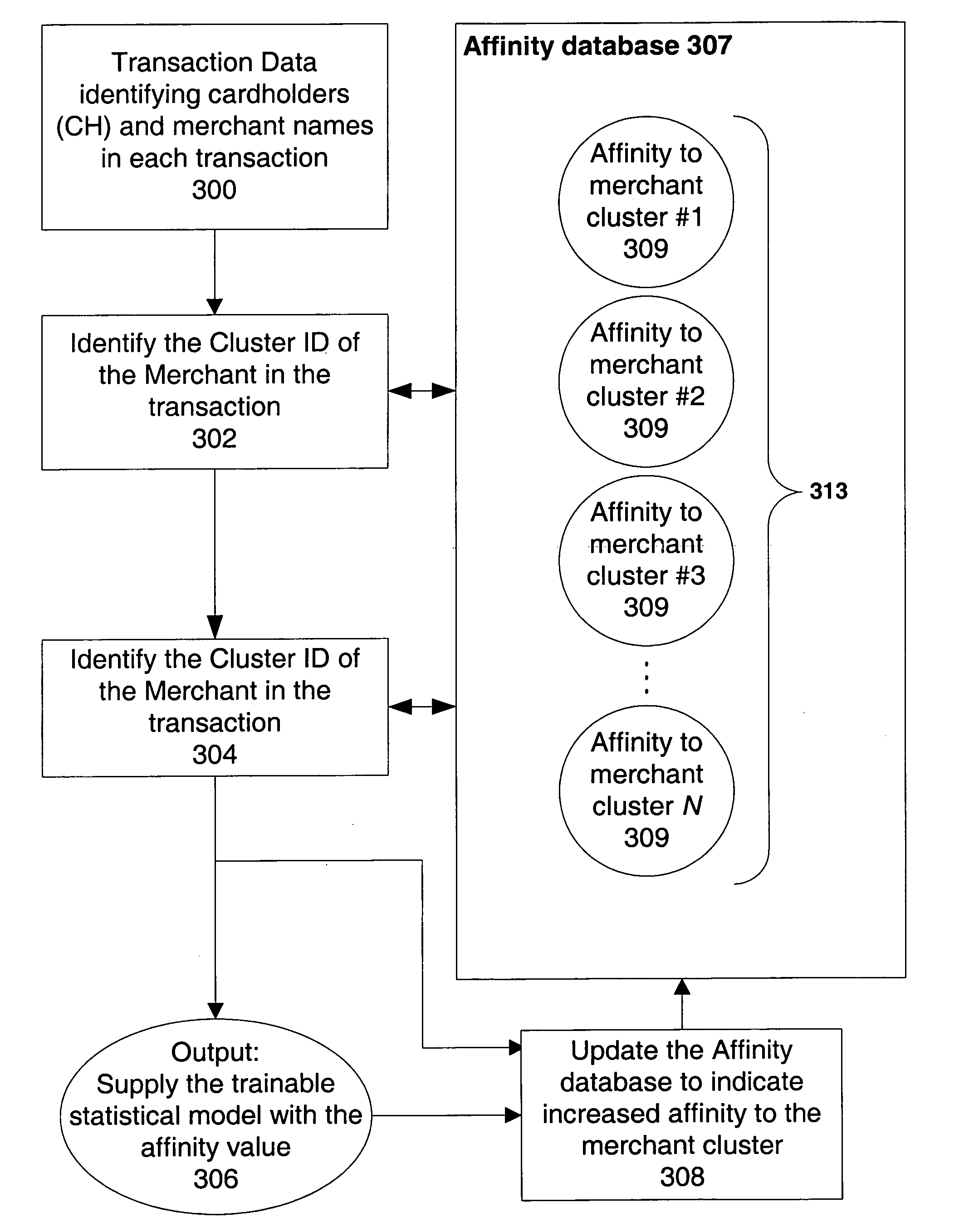Detecting and measuring risk with predictive models using content mining
a predictive model and content mining technology, applied in the field of risk detection and measurement in transactions and accounts, can solve problems such as the problem of large risk and loss for both card issuers and merchants, the inability to use textual information in statistical models, and the problem of problematic use of merchant id codes, so as to improve statistical fraud control and reduce dimensionality.
- Summary
- Abstract
- Description
- Claims
- Application Information
AI Technical Summary
Benefits of technology
Problems solved by technology
Method used
Image
Examples
Embodiment Construction
[0036]Overview of Data Dimensionality Reduction in Risk Detection System
[0037]FIG. 1 summarizes where the operation of one embodiment present invention in the context of a risk detection system 100 (which is not illustrated in FIG. 1); one such a system is illustrated in FIG. 4, and described further below.
[0038]The Statistical Model 116 scores individual transactions. Credit card transactions are exemplary transactions, but other types of transactions may be scored, such as applications for credit, Internet transactions, payments, checks, debits, etc. Each transaction has data fields associated with it. The information contained within those data field (as well as information gleaned from the data fields of prior transactions) is used to compute—using a statistically derived value—the score of the transaction. The content of these data fields may be understood as being provided in one of three levels, or types, of representation: Numerical 104, Low Categorical 106, and High Categor...
PUM
 Login to View More
Login to View More Abstract
Description
Claims
Application Information
 Login to View More
Login to View More - R&D
- Intellectual Property
- Life Sciences
- Materials
- Tech Scout
- Unparalleled Data Quality
- Higher Quality Content
- 60% Fewer Hallucinations
Browse by: Latest US Patents, China's latest patents, Technical Efficacy Thesaurus, Application Domain, Technology Topic, Popular Technical Reports.
© 2025 PatSnap. All rights reserved.Legal|Privacy policy|Modern Slavery Act Transparency Statement|Sitemap|About US| Contact US: help@patsnap.com



